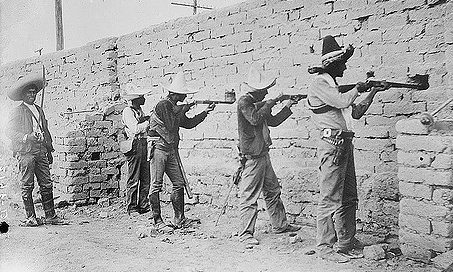
I have been involved in the preparedness movement, at least to some degree, for a very long time. I became involved in preparedness when all like-minded people were classified as “survivalists,” although there was never a universally accepted definition of exactly what a survivalist is. There still isn’t.
When that term became tainted because of certain bad actors, many of us were then classified as “preppers.” It sounded less threatening, less “Unabomber cabin.” Again, there was no universally accepted definition of exactly what a prepper is. There still isn’t.
The television series Doomsday Preppers almost always seemed bent on finding the most flamboyant and, often, kooky among the prepper movement to focus on. With the passage of time, that term prepper has become somewhat tainted. For many it smacks of a naive suburban/rural homeowner who has simply lined a basement with cases of freeze-dried food, and who has set aside firearms and ammunition while waiting for Armageddon.
For this reason, and because words do matter and often control the debate, I’ve decided that “Self-Reliant” and involvement in “Self-reliance” are terms and concepts that more fairly represent, in a very positive way, the mindset of the preparedness movement. Who could easily and flippantly criticize “Self-Reliants” and “self-reliance” without incurring criticism? At least to some degree, it would be similar to criticizing, “the flag, Mom, and apple pie.”
Along my path, I have read the thoughts of many writers who have offered advice and who have attempted to provide a framework for survival in tumultuous times. As a result, I have formed opinions about many aspects of survival after TEOTWAWKI.
One idea about surviving bad times that seems to have mostly disappeared from the preparedness conversation is being a “Lone Wolf,” that is, a stoic, stalwart, independent soul who leaves a collapsing society behind, and who heads out alone into the wilderness or on the road, manfully rising to the challenges with an AR-15, a sidearm, and a rucksack (and, often, with a loyal and devoted canine companion) in order to live off the bounties of the of his brave new world. Today, under harsh scrutiny and criticism, this idea has been mostly relegated to the Walter Mitty fantasy category–although it is still the fodder for novelists.
As an alternative to the lone wolf strategy, many writers in the preparedness field have offered excellent ideas about forming survival groups, often called Mutual Assistance Groups (MAGs), in order to meet the multitude of daunting challenges with which people will be confronted after society falls completely apart. This idea appears to offer a much greater chance of survival should law and order be only a fond memory and after the supply chain completely fails and survivors are left to their own devices in order to meet their daily needs.
With MAG groups, the devil, however, is in the details.
Admittedly, lifelong bonds or blood relations will help hugely when forming a group. Many proponents of group frameworks, however, assume that there will be conditions that are far too idyllic.
Proponents often assume that a monolithic cohesion and social order already exists among the survivors, and that it is simply necessary to organize their efforts more effectively. In many respects, the television series Jericho presented such a situation. A town mayor and council existed. A small police force existed. Friends and neighbors were, in large part, linked by lifetimes of familiarity and often by a blood-relation in many cases. History, however, indicates that the “ties that bind us” can only be pushed so far and that, to a large extent, they can be expected to fail unless the size of the membership stays below a certain maximum number. Those ties will fail once the size of the group includes people who are barely more than passing acquaintances.
Trying to organize a MAG in advance of a calamity comes with certain risks if that group is located, say, around a certain neighborhood or other specific location as it likely will be. Efforts to proselytize new members will be, more often than not, a failure. If experience is any indication, for every new recruit, there will likely be nine people who decline to join, especially if the effort is made during what are, more or less, relatively normal times. This means that nine people know that the recruiter’s expressed interest in the matter means that the recruiter’s home is where to head when conditions take a dramatic downturn. The only things that many of these people will bring with them is a knife, a fork, and an empty stomach. If they are turned away, the risk is high that they will not keep the specific member or the group’s existence confidential, i.e., “I know a guy…” This will be especially the case if those who are rejected sense that divulging this knowledge to others will be to their advantage in the days that follow when they are becoming increasingly desperate, their justification being, “How dare he turn me away? I’ve known him for years!”
Even when a MAG is successfully formed, the human condition will be at work. It is highly likely that some members will drag their feet in complying with commitments to acquire the agreed-upon amount of food, firearms, medications, etc. Shortfalls will occur for a variety of reasons, e.g., loss of a job, unexpected major expenses in the family, or even a loss of enthusiasm concerning the need for the effort, in general.
For all of these reasons, the focus here will be on survival groups that will be formed only after TEOTWAWKI.
Here are a few thoughts about that:
Most writers who propose the formation of MAGs focus on the benefits and leave unmentioned exactly how the survival group will be formed after society has turned “sporty.” Is this group to be formed from the survivors who are castaways on some idyllic, picturesque Pacific Island after an airliner crash? Is this group to be formed from four or five families living in Butcher Hollow or on a suburban tract home cul-de-sac? Or is this group to be formed from all of the residents of a crossroads town, one that has a gas station, a convenience store, and an hour’s drive to the nearest Walmart? If so, is everyone on the island/cul-de-sac/town automatically a part of this survival group?
A group formed ad hoc after everything has turned sporty is more likely not to share the same mindset. Some will not be willing to shoulder their share of responsibilities. Problems that affect routine daily social interactions will manifest themselves fairly quickly.
A cardinal principle of management is that every time a group doubles in size, its very nature changes. A charismatic figure may form the group but, after a certain point, the group’s increase in size often means that the founder may be shoved aside and replaced by someone with a better administrative skillset. This sometimes happens after a revolution succeeds in overthrowing a government. The new leader of the country who ably led the rebels in the jungles by force of personality is sometimes incapable of properly allocating electrical power distribution, dealing with political factions, or deciding annual budget allocations. In a survival group, the leader’s removal will often cause serious division and bitter acrimony due to the loyalties (and/or blood relation) of his stalwarts, as well as the aspirations of rivals. The group must deal with the leadership transition or it will break apart.
Today, most people who are part of a homeowners’ association have seen issues that develop among people with different views about how matters should be run. I have a relative who formerly lived year-round in what was originally built as a modest weekend getaway community. Each homeowner was required to donate a very small fee each year for maintenance of the sole access road that all of them shared. Some homeowners simply refused to contribute any money for the maintenance of the access road, knowing full well that other homeowners would pay for the maintenance expense anyway. Because the yearly assessment was so small, unless the unpaid fees were allowed to build up over a few years, it was not worthwhile to take the delinquent homeowner to court. During that time, the holdout had the use of the road for which he paid nothing.
I also have a friend who lived among a collection of about 20 homes that was located at least a 25-minute drive down a dirt access road. There was no Homeowner’s Association (HOA). Some homeowners refused to donate to the yearly maintenance of the access road, knowing that others would pay for the repairs anyway.
(To be concluded tomorrow, in Part 2.)


